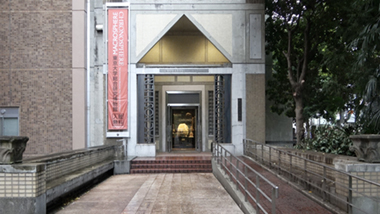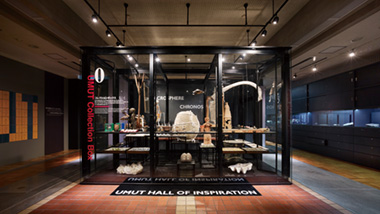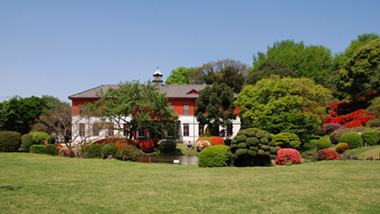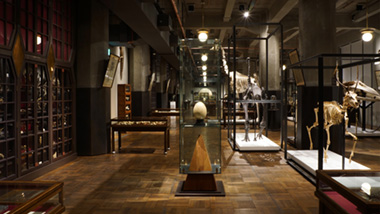

What is UMUT?
The University Museum, The University of Tokyo (UMUT), was founded as the University's storage center in 1966, where research materials collected by the faculty members. These materials, right from those on earth sciences and biological sciences to an extensive collection of items related to cultural sciences and other fields accumulated since the university’s inception in 1877, are remarkable not only for their variety but also their number—over 4 million specimens, proof of the university’s continuous research and education activities. From its initial focus on the main storage, significant changes occurred in the research scope, educational environment, and social requests to the university. To accommodate them, UMUT was reorganized extensively in 1996 to expand its function to strengthen its research and exhibitions.
As the signboard museum of the university, UMUT is currently responsible for (1) conducting interdisciplinary research, (2) engaging in curatorial work, (3) exhibiting the specimens, and (4) providing research and educational facilities for university researchers, students, and others. Furthermore, many of UMUT’s staff members, who are the university’s professors, are actively involved in graduate students’ education based on the museum’s collection. Importantly, UMUT’s mission is to develop ideas on how it can contribute to the university’s activities themselves.
Facilities and Exhibitions
The main building is situated on the university’s Hongo campus. It is UMUT’s headquarters and serves as a research center for the promotion of cutting-edge science from an interdisciplinary perspective. It is also well-known for contributing to the development of museum studies and exhibition technology. The permanent display at the main building comprises the “Hall of Inspiration,” an open facility with storage space, laboratories, and exhibition rooms, where visitors can observe ongoing research at UMUT—the research covers a wide range of disciplines, from planetary science, geology, biology, and anthropology, to archeology, as well as laboratory sciences such as radiocarbon dating and analytical chemistry. The display is intended to demonstrate how cutting-edge macro-level research of material remains ignites our curiosity about nature and culture, the fundamental sources of the research spirit in any period of human history.
Besides the main building, UMUT has several annexes and satellite facilities outside the campus. In 2001, the Koishikawa Annex was opened in the Koishikawa Botanical Garden; the aim was to exhibit architecture in a scenic atmosphere in the university’s oldest building located in Japan’s oldest botanical garden, designated as Important Cultural Property and Special Historic Site, and a Special Place of Scenic Beauty. Newer annexes built more recently include the Intermediatheque, established in 2013 in collaboration with the Japan Post Co. Ltd., which provides a larger space for public exhibitions. One of the unique aspects of this facility is that many of the display showcases are pieces of antique furniture actually used at the university in the 19th and early 20th centuries. Located in the fully urban environment of central Tokyo, this facility cultivates an atmosphere of intrigue, mixing antiquarian interest and curiosity for advanced sciences.
These multifaceted activities of UMUT at its different facilities, while maintaining the compatibility of high-quality research and display technology, have facilitated even more advancements in recent years. In collaboration with collaborating institutions and museums, UMUT has launched the Mobile Museum project worldwide—the aim is to display the research outcomes of UMUT’s inter and domestic activities with the host institutes as icons of collaboration.
 Exterior view of the Hongo Main Museum |
 UMUT Hall of Inspiration (Hongo Main Museum) |
 Koishikawa Annex |
 INTERMEDIATHEQUE |
Associated Facilities
Mobilemuseum
Bunkyo Education Center
Ozuchi Cultural House
Togakushi Museum of Geology and Fossils
Makabe Historical Museum